Date: 29 May 2005
The Group continues to benefit from improvements in operational efficiency and continuous cost reduction programmes. Our continuing focus on cash generation enables us to report a further significant reduction in net debt. Adoption of a progressive dividend policy is an indication of the Board's growing confidence in the capability of the business to generate cash sustainably. Over the course of the next financial year, we expect to begin the transition into "Stage3" of our "Cash for Growth" strategy, with targeted investments into profitable growth opportunities."
Highlights:
Operating profit including joint ventures and associates up from £213 million to £231 million
Profit on ordinary activities before taxation, amortisation of goodwill and exceptional items up from £152 million* to £180 million, equivalent to an increase of 26 per cent at constant exchange rates
Earnings per share before amortisation of goodwill and exceptional items up 19 per cent from 7.5p* to 8.9p; basic earnings per share up from 6.3p* to 7.8p (plus 24 per cent)
Another year of strong free cash flow at £172 million
Net debt again reduced, by 14 per cent in the year, from £664 million to £572 million
Final dividend increased to 3.35p (2004 - 3.25p), increasing to 5.1p for the full year, the first increase in the dividend for a decade
70 new model launches in Pilkington Automotive a record
Chairman, Sir Nigel Rudd, commented:
This is another strong set of results from Pilkington. The Group continues to benefit from improvements in operational efficiency and continuous cost reduction programmes. Our continuing focus on cash generation enables us to report a further significant reduction in net debt. Adoption of a progressive dividend policy is an indication of the Boards growing confidence in the capability of the business to generate cash sustainably. Over the course of the next financial year, we expect to begin the transition into Stage 3 of our Cash for Growth strategy, with targeted investments into profitable growth opportunities.
Pilkington has once again delivered results well ahead of the previous year. We have seen a good performance in Automotive, with Building Products holding up, despite variable trading conditions in our markets around the world. The Group continues to benefit from improvements in operational efficiency and continuous cost reduction programmes. Energy surcharges on Building Products deliveries in Europe and North America have helped to alleviate the significant cost pressure from rising energy prices.
The Automotive business has been involved in a record number of new product launches over the year and has benefited from strong sales of many existing models equipped by Pilkington. Building Products results in Europe were affected by low industry capacity utilisation, but outside Europe Building Products results continued to improve.
Financial Results
Although turnover from continuing operations, including joint ventures and associates, decreased two per cent to £2.7 billion, at constant exchange rates this was equivalent to an increase of two per cent.
Operating profit from Group businesses increased by £15 million to £195 million. Operating profits from joint ventures and associates also increased from £33 million to £36 million, principally due to improved results in Cebrace and Shanghai Yaohua Pilkington, offsetting the profit decline at Vitro Plan SA de CV and its subsidiaries in Mexico. Overall operating profit increased by eight per cent from £213 million (as restated) to £231 million in 2005.
Profit before goodwill amortisation, exceptional items and taxation increased from £152 million to £180 million, with lower interest charges on reduced borrowings contributing, as well as improved profits from operations. After deducting goodwill amortisation of £8 million (2004 £8 million) and exceptional items arising principally from the sale and termination of operations of £7 million (2004 £7 million), profit before tax was £165 million, an increase of 20 per cent on the £137 million (as restated) achieved in 2004.
A continued focus on cash generation has enabled Pilkington to report a further reduction in net debt. Net borrowings fell from £664 million in 2004 to £572 million at 31 March 2005. This takes the total reduction in debt in the last three years to £348 million or nearly 40 per cent. The Group remains on track to begin its transition into the third phase of its strategy over the course of the next financial year, with targeted investments into profitable growth opportunities that meet our strict criteria for financial returns in our core business areas.
Earnings and dividends
Earnings per share before exceptional items and amortisation of goodwill increased from 7.5 pence (as restated) to 8.9 pence, up 19 per cent. Basic earnings per share increased from 6.3 pence (as restated) to 7.8 pence, an increase of 24 per cent.
The board is recommending an increase in the final dividend to 3.35 pence per share, bringing the total for the year to 5.1 pence. The dividend is covered over two and a half times by free cash flow.
This is the first increase in the dividend for ten years. Subject to the approval of shareholders at the annual general meeting, the final dividend will be paid on 1 August 2005 to shareholders on the register at 10 June 2005.
Cash flow and borrowings
Free cash flow was again strong and amounted to £172 million (2004 £207 million). As expected, net cash flow before financing of £113 million was down on the record level of £188 million achieved in 2004. Net borrowings fell from £664 million in 2004 to £572 million at 31 March 2005, successfully achieving an objective of the Group for Stage 2 of its programme. This takes the total reduction in the last three years to £348 million, including the redemption of preference shares.
International Financial Reporting Standards (IFRS)
These results will be the last that Pilkington reports under UK GAAP. At 1 April 2005, Pilkington, in order to meet the requirement for European Union listed companies to report under IFRS for periods commencing on or after 1 January 2005, moves to reporting under IFRS. The results to be reported for the half year to September 2005 will include reconciliations between UK GAAP and IFRS as required under IFRS 1. Pilkington has planned for this transition for over two years and although there will be changes to the UK GAAP results and balance sheet as previously reported, the changes will not mask the underlying improving trends in the robustness of Pilkingtons business. Pilkington will release a restatement of its 2005 results under IFRS in September 2005.
European Commission Inspection
On 24 February 2005 the European Commission announced an investigation into the flat and car glass sectors of the European glass manufacturing industry in connection with alleged infringements of Article 81 of the Treaty of Rome, the maximum penalty for which, if established, can be a fine of up to ten per cent of worldwide turnover. In the course of that investigation the Commission has carried out inspections at the premises of several glass manufacturers, including Pilkington. Pilkington has operated a competition law compliance programme for a number of years and is cooperating with the Commissions investigation. The investigation is at a very preliminary stage and the outcome cannot yet be assessed.
Strategy
Pilkington continues to follow a clear three-stage strategy, the stages of which are:
First to improve the operational fitness of the businesses;
Second to produce net free cash from operations, initially to reduce debt; and then
Third to invest net free cash in future profitable growth.
Over the past seven years radical improvements have been made in the Groups manufacturing performance, with significant reductions in overheads across the business. Management attention remains focused on the generation of net free cash and achieving further internal economies. The Group remains on track to begin the transition into the third phase of its strategy over the course of 2006.
Review of Operations
Building Products
Building Products sales, including joint ventures and associates, were £1,389 million, broadly in line with the previous year at constant exchange rates. Operating profits were essentially unchanged at £144 million. Although sales volumes were at similar levels to the previous year in Europe, prices fell in the early part of the year. The reduction in prices was largely offset by internal cost savings and improved manufacturing efficiencies. In South America, profits improved by approximately 12 per cent.
Global demand for float glass increased last year, with overall capacity utilisation of 87 per cent continuing its gradually improving trend from the low level reached in 2001. Most of the growth was in China, though South America improved and Australia held steady. While European demand picked up slightly, excess capacity remains. The North American commercial market continued to be weak last year, although there were clear signs of recovery as the year progressed.
The Groups Building Products business remains a global market leader. Manufacturing performance is a critical element of this success and there is a continuing requirement both to ensure we implement best practice in every plant worldwide and to reduce the cost base in line with our objectives. To support this requirement, a worldwide manufacturing organisation for the business line has been created, which will include all the float and rolled plants worldwide, the central manufacturing improvement team and the Building Products technology group.
Demand for glass continues to outstrip GDP growth globally, with continuing growth in the value-added sector in mature markets and demand for basic architectural glass strong elsewhere. Over the coming year industry estimates are for demand to continue to recover in most markets worldwide, with strong growth in the Chinese market continuing. In Europe, surplus capacity is likely to continue in the short term, with consequent continued weak pricing.
Europe
Building Products Europe is Pilkingtons largest single business, representing 69 per cent of Pilkingtons Building Products sales in 2005.
Market conditions continue to be challenging, with industry capacity utilisation still low at about 82 per cent, following the market decline in 2001 and 2002. The competitive environment has led to price erosion, and prices have reached historical lows. At least 18 months of further volume increases closer to the long-term trend will be required to soak up excess capacity before firmer pricing can be expected.
In response, significant improvements in manufacturing performance were made during the year, further reducing costs. The restructuring of the European business approximately one year ago has simplified administration and brought further cost savings. Additional restructuring of the downstream network resulted in the sale or closure of a number of branches in Austria. The significant cost push in energy and raw materials was partly offset by the successful introduction of an energy surcharge.
The net effect of all these factors has been a modest decline in sales and operating profits.
Production of the Groups high value-added clear fire protection range, the market-leading Pilkington Pyrostop, again increased in Germany to meet continuing growth in demand for this product. In the year, Pilkington Pyrostop was launched in Australia and a cutting station established to provide best service to the market. In the UK, an improved version of Pilkington Pyrodur Plus has been well received, allowing the business to grow sales at a faster rate.
Sales of Pilkington Activ continue to progress well, driven by steady growth in product recognition. Increasingly, this growth is supported by the expanding range of Pilkington Activ derivatives, offering Pilkington Activs unique self-cleaning properties in combination with solar control coatings, low-e energy-saving glass, laminated safety glass and noise-reduction laminates.
UK sales of low-emissivity Pilkington K Glass were once again strong, following the upgrade in UK building regulations.
The Groups first float glass plant in Russia, in the Ramenskoye district of the Moscow region, is at an advanced stage of construction. Work has also begun on a new insulating glass unit manufacturing facility in Szezchin, Poland.
North America
North America represented 12 per cent of Pilkingtons Building Products business in 2005, mainly selling to the commercial market, where market demand has been weak for the last few years but is now beginning to pick up. However, residential demand has been strong so industry capacity utilisation has remained healthy, leading to stable pricing. Pilkington sales in sterling were down, but were up in dollars, and overall profits improved due to cost savings and a more favourable sales mix. The Building Products business in North America is now well positioned to take advantage of an upturn in the US economy, particularly in the growing commercial sector.
Vitro Plan SA de CV (VVP), Pilkingtons 35 per cent associate, is operating in a more stable environment than a year ago, with the peso holding up against the US dollar and economic growth on both sides of the US/Mexico border. However, despite strong volume increases as a result of the start up of the new Mexicali line boosting export sales, weakness in the domestic construction market resulted in overall sales declining by 12 per cent.
South America
Group businesses in South America include Argentina, Chile and the downstream business in Brazil, which collectively represented six per cent of Group Building Products sales in 2005.
In Brazil, the market recovered from the weakness in 2004, inflation stabilised and the Brazilian real continued to appreciate against the dollar. In July 2004, the Pilkington-designed and built fourth float line was commissioned by the Pilkington/Saint-Gobain joint venture Cebrace. The plant is fully operational and capable of producing approximately 185,000 tonnes of float glass per annum. This additional capacity helped strong growth in export sales. In sterling terms, sales increased ten per cent and profits rose by 27 per cent.
In Argentina, the economy grew strongly after the crisis of 2002, with the construction industry leading the economic resurgence. Consequently, demand for float glass was strong, and has now recovered to the levels seen before the economic collapse. Pilkington has maintained its high market share and continues to drive efficiency improvements. Chile has been stable and Pilkingtons market share has increased as imports have reduced. Overall, Pilkington sales and profits were strong in dollars, though sales declined in sterling due to exchange rate movements.
Asia Pacific
In Australia and New Zealand, which represented 11 per cent of the Groups Building Products sales in 2005, the anticipated softening of the general economy impacted sales revenues. This was partly mitigated by the reduced volume of imports, due to the higher costs of deep sea freight, and rising domestic demand for high quality float in China. Ongoing manufacturing efficiency improvements ensured that Building Products Australasia again produced good profit and cash results. During the year, the under-performing decorated glass business (for white goods and architectural applications) in Adelaide was closed, which will improve the overall performance in the region.
Despite trading conditions becoming more difficult, the New Zealand Building Products business continued to perform strongly, generating good profits and cash. The impact of slowing net immigration, softening in the residential building market and continued strengthening of the New Zealand dollar were offset by cost reduction measures.
China once again proved to be a fast-growing market in 2005. GDP growth was above nine per cent, spending on construction rose and Chinas flat glass output grew strongly. One third of the worlds flat glass is now made and sold in China and there are over 100 float glass lines in operation around the country. Prices for float glass improved considerably and by the end of the year were more than 15 per cent higher than the previous year. The architectural processed glass market also remained strong, though new entrants into this market created some price pressure.
Pilkingtons 19 per cent owned associate company in China, Shanghai Yaohua Pilkington Glass Co Ltd (SYP) produced excellent results in 2005, with a 17 per cent increase in sales and a 68 per cent increase in profit. SYP now operates four float glass lines and four architectural glass processing facilities, and during the year launched a new automotive glass plant in Shanghai. There is still considerable opportunity for SYP to expand further.
Automotive
Automotive Products sales, including joint ventures and associates, were £1,198 million, down four per cent from the previous year. At constant exchange rates, sales were broadly the same as last year. Operating profit improved by 20 per cent to £107 million. Further integration has been achieved in the global supply chain, bringing cost savings, optimisation of plant loading and improved service to both the Original Equipment (OE) and Automotive Glass Replacement (AGR) customers worldwide.
Pilkington Automotive operates as an integrated global organisation, serving the OE and AGR markets. A programme to further integrate the supply chain, to the benefit of both OE and AGR worldwide, is already producing savings and improving customer service. Over the course of the year, Pilkington announced to customers in China the reorganisation of the three Chinese manufacturing plants (which it wholly or partly owns) with a unified identity and organisation.
Pilkington Automotive has been involved in more than 70 new product launches for new models over the past year, a record for the business. New introductions included high volume models such as the Citroën C3, BMW 1 and 3 Series, GM Astra, Silverado and Trailblazer and the Mercedes A-Class, as well as niche market models such as the Aston Martin DB9.
These new model platforms underpin Pilkington Automotives future business. To ensure that this heavy programme of new model introduction can be successfully sustained, the business continues to develop, improve and expand its global quality management system. During the year, Pilkington Automotive achieved further site accreditations under global environmental standards.
Automotive industry expectations over the coming year are for relatively modest increases in production and sales of light vehicles across Pilkingtons main markets of Europe and North America, and for significantly higher growth rates in the emerging markets in which Pilkington is already established. Pilkington Automotive will grow faster than the market in Europe, through success with new models and specialist applications. Plans for further improvements in efficiency, productivity, quality and customer service should again show through in the results, positioning Pilkington well to move forward with growth plans in developed and emerging markets. In North America, Pilkington continues to broaden its customer base across the major global light vehicle manufacturers.
Europe
Overall light vehicle production in Europe was unchanged from the previous year. Turnover in our European Automotive business, accounting for over half of the business line sales, was up by two per cent in euro with underlying sales volumes having moved ahead faster than the market.
Increased product complexity and functionality in glass content continued to be a requirement of the European OE market, with growing sales of panoramic and solar reflective windscreen glass, laminated sidelights for security and comfort and acoustic noise-reducing and heated integrated-wired products. This trend will continue as vehicle manufacturers emphasise the advantages of increased safety, visibility, comfort and noise reduction. During the coming year, investments will be completed in our plant in Sandomierz, Poland, to provide additional capacity and capability to manufacture the range of value-enhancing products required by our customers.
The value of the aftermarket also continues to grow in line with increases in the adoption of high value-added windscreens, highlighted above, together with those containing extra components such as rain sensors and extruded profiles. As a major OE supplier with access to all these technologies, Pilkington is able to offer a wide and attractive product range to its customers.
Pilkington has continued to improve customer service, efficiency and productivity, resulting in increased profitability across the European automotive business.
North America
OE light vehicle production in North America declined by two per cent compared to the previous year. Pilkington sales in this region (accounting for approximately one third of the Groups Automotive sales) were virtually flat in US dollars.
The North American business again demonstrated operational improvement this year. However, due to the significant price pressure in both the OE and AGR markets, operating profits in North American Automotive declined by around 25 per cent in US dollars.
Vitro Plan SA de CV and subsidiaries (VVP) turnover in its automotive operations increased slightly, with stronger OE volumes being offset by lower AGR sales, where a decision was made during the year to exit the wholesale operations in the North West United States and concentrate on the distribution market.
South America
Pilkingtons South American Automotive business experienced strong demand, with volumes up nearly 30 per cent and strong growth in both domestic and export markets. This sales uplift, combined with continued improvements in production efficiency, resulted in enhanced profitability. Further investment in both capacity and product capability will be made during the coming year, to meet the expected rising demand both for greater sales volume and increased product complexity.
Asia Pacific
In Australia, the sale of new vehicles continued at record levels but, as has been the trend for many years, new vehicle imports continued to grow, now representing 70 per cent of the Australian market. Profits in Australasia were reduced by one third, despite continued manufacturing improvements, reflecting price erosion and the closure last year of the Automotive Glass Replacement business in New Zealand.
The Chinese automotive market continues to grow rapidly, with passenger car sales increasing 16 per cent in 2004 to 2.4 million units. Around 95 per cent of these cars were made in China and 50 per cent of the total production involved western vehicle marques, underlining the need to develop production capability for an increasingly sophisticated market.
The Pilkington Automotive Chinese plants supply both OE and AGR domestically and for export and are well placed to continue growing. Additional investment is planned to increase capacity and product range. During the past year, Pilkington increased its ownership in all three plants.
Prospects
In Building Products, we expect some demand recovery, although in Europe surplus capacity and consequent weak pricing are expected to continue. We anticipate further cost pressure in commodity and energy prices, offset in part by the energy surcharges now operating successfully in North America and Europe. In Automotive, global vehicle build continues to grow and Pilkington Automotive is well placed to win new, and grow existing, business. The Group continues to benefit from the reducing level of interest bearing debt. Over the next year, our priorities are to maintain the momentum on costs established under Stage 1 of our three-stage strategy, to complete Stage 2, achieving a position of financial strength, and to begin the transition to Stage 3, through increased investment in profitable growth. Overall we expect to make further progress in 2005/06.

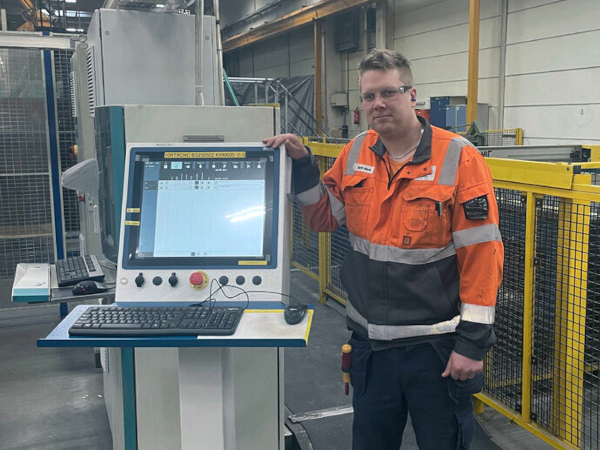
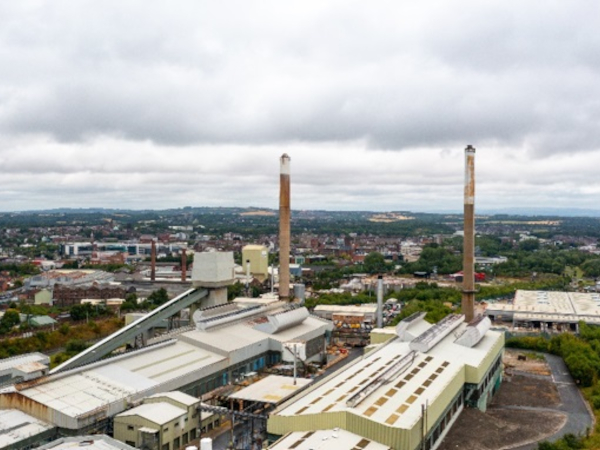
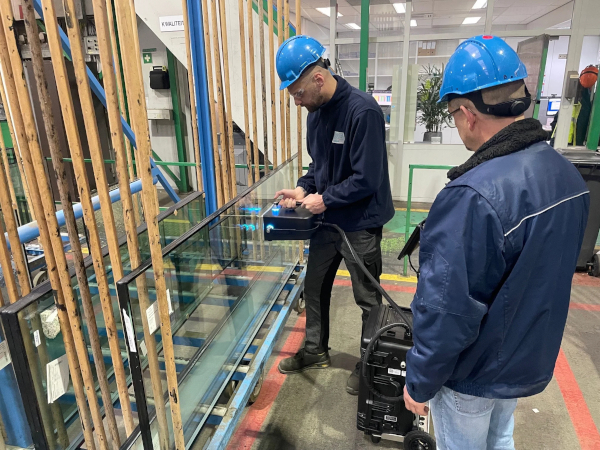
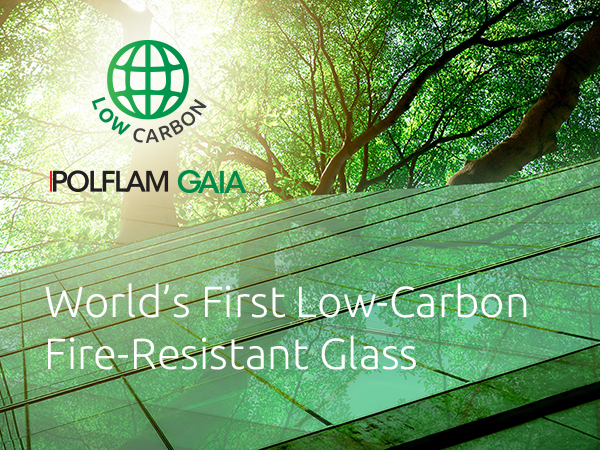
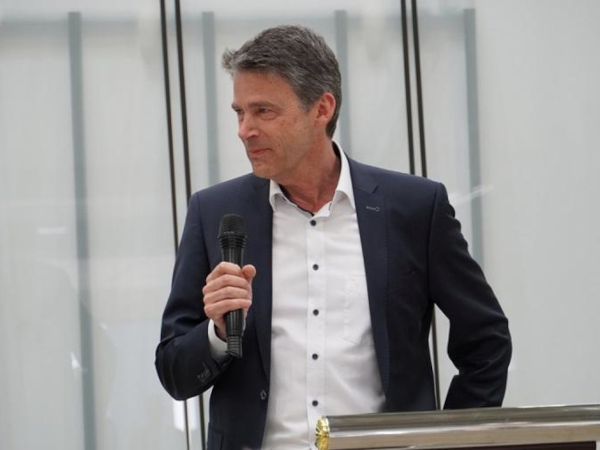
Add new comment